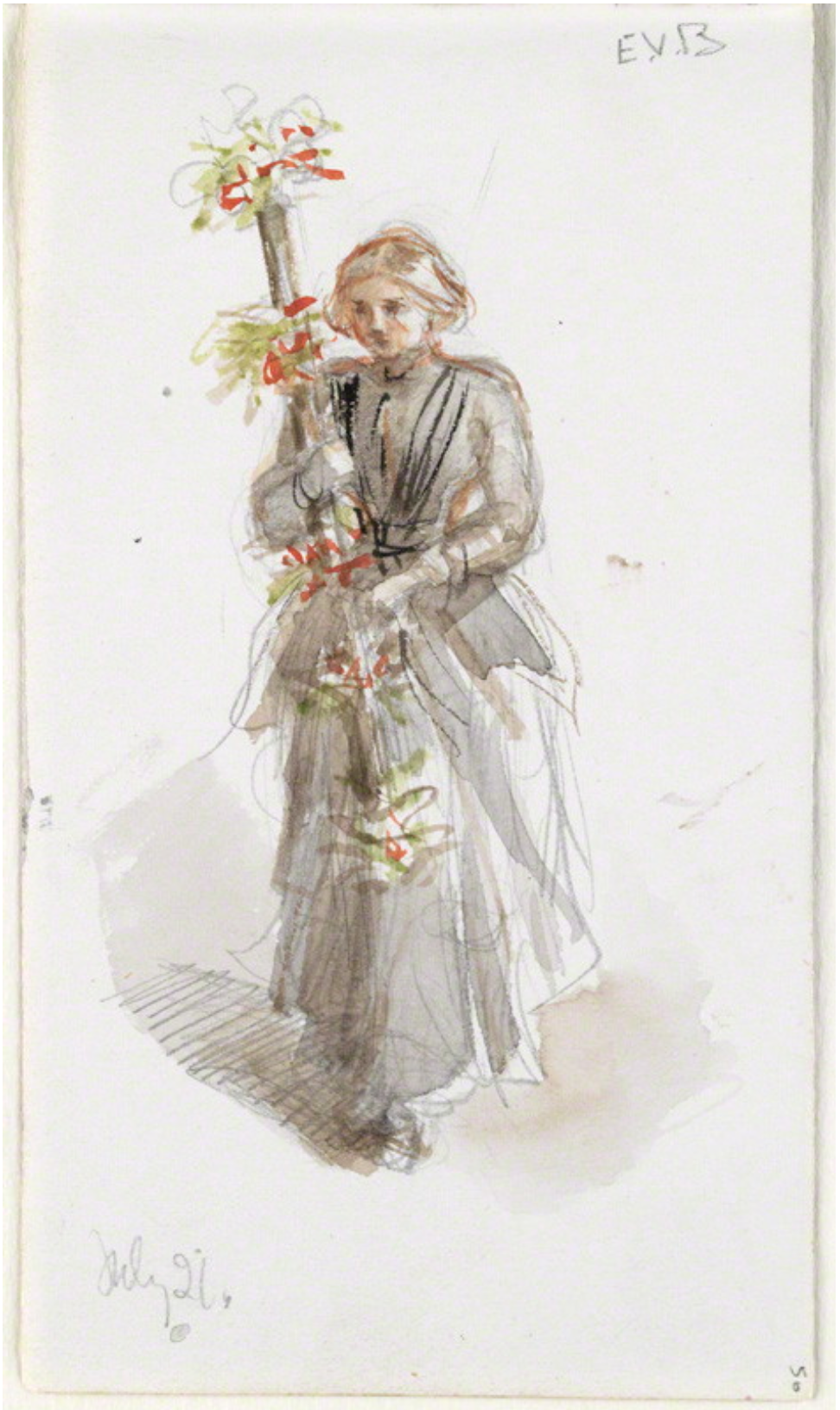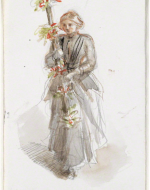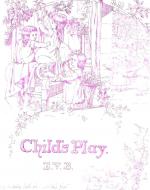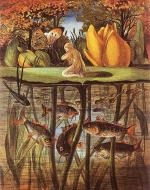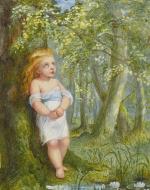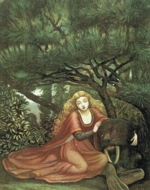Created by Meghan Wax on Tue, 02/27/2024 - 23:14
Description:
Eleanor Vere Boyle started painting after the first of her five children was born. Inspired by Albrecht Dürer, the Pre-Raphaelites, and John Ruskin, and guided by other talented artists of the time, Vere Boyle published twenty-one books in fifty years. Her watercolor paintings reflect her fascination with nature from childhood to adulthood. Eleanor Vere Boyle became an avid gardener after her husband, Richard Boyle, retired, and they relocated to Buckinghamshire. Vere Boyle was a writer and poet as well as an illustrator, and she gave lectures at the Frome School of Art. She was involved in charity work for her husband's parish, and the profits she earned from her watercolors paid for the fresh drinking water in Lower Marston.
Eleanor Vere Boyle's watercolors were wildly popular in Victorian England as she set them in an idealized world. Her attention to details in nature and the beauty of the environment gained the favor of countless reader-viewers who were enthralled by her depictions of children, fairies, and mythological beings. Her illustrations often include woodland creatures, flowers, and foliage, and they demonstrate the interconnectedness of nature and humanity. These reoccuring themes in her artwork earned her the reputation as, not only a prominent illustrator for fairy tales, but also "a highly significant figure in the development of work by female Victorian illustrators" (Goldman par. 30). Vere Boyle illustrated many children's books, and some of her most famous works accompanied the written words of renowned storytellers like Hans Christian Anderson. Her illustrations brought to life many classic tales including "Beauty and the Beast."
Goldman, Paul. “Eleanor Vere Boyle as an Illustrator.” The Victorian Web, 2020, victorianweb.org/art/illustration/boyle/illus.html.
Louisa Anne Beresford, Watercolor and pencil portrait of Eleanor Vere Boyle, 1888, courtesy of the National Portrait Gallery, London, The Victorian Web. This portrait of Eleanor Vere Boyle is by her friend Louisa Anne Beresford, who was also a skilled artist. Eleanor Vere Boyle (1825-1916) was born in Scotland and later moved with her family to Hampton Wick in the outer London Borough of Richmond-on-Thames. Eleanor Vere Boyle was engaged to the Hon. Richard Boyle, son of Lord and Lady Cork, at the age of nineteen and was very happy with the marriage. Often known by her initials, EVB, Eleanor Vere Boyle illustrated books for both adults and children. Many of her illustrations depict young women, children, mythological creatures, fairies, and elements of nature.
Eleanor Vere Boyle, Child's Play, Title page, 1851, scanned image by Simon Cooke, The Victorian Web. Child's Play is Eleanor Vere Boyle's first book and is comprised of seventeen drawings printed by transfer lithography. The children's book is a collection of excerpts from nursery rhymes, and the accompanying illustrations are drawn in soft sketches that appeal to young readers. Child's Play sets the stage for Eleanor Vere Boyle's future in painting women, children, fairies, and other mythical creatures in idyllic, romantic, and sentimental settings. In Eleanor Vere Boyle's illustrations, we see clearly the influence of popular German "outline books" produced for children in the 1840s and the work of Richard Doyle, Arthur Hughes, and the Pre-Raphaelites.
Eleanor Vere Boyle, "Thumbelina," 1870, Norman Rockwell Museum. Thumbelina by Hans Christian Anderson tells the story of a girl who is born from a flower of barley. A woman desperate for children receives the barleycorn from a witch. Thumbelina, stolen from her walnut cradle while she sleeps, is commanded to marry a toad and later a mole with whom she desperately does not want to spend her days. After being captured by more woodland creatures and receiving help from others, Thumbelina escapes both situations and eventually meets a flower-fairy prince whom she falls in love with and marries. Thumbelina is renamed Maia and is gifted a pair of wings, so she can travel from flower to flower with her husband. Eleanor Vere Boyle's "Thumbelina" depicts the tiny protagonist in a beautiful watercolor centered in nature and the diversity of forest creatures. Vere Boyle calls the reader's attention to Thumbelina's small size by illustrating her kneeling on a lily pad that is far larger than she is and comparing her figure to the massive dimensions of the fish, tadpoles, butterfly, trees, vegetation, and flowers.
Eleanor Vere Boyle, "Long Did His Thoughts Waiver," 1868, Norman Rockwell Museum. Eleanor Vere Boyle illustrated The Story Without an End by German author Friedrich Wilhelm Carové. This fairy tale follows a young child on his journey through nature as he listens to stories told to him by the flora and fauna and experiences the beauty of the natural world through his five senses. While traveling through gardens, the child enagages in conversations with unique creatures, feasts on food grown from the ground he walks on, and embraces the environment as his shelter for the night as well as his world to explore. The Story Without an End focuses on encouraging wonder and curiosity regarding nature which Eleanor Vere Boyle captures in "Long Did His Thoughts Waiver." This watercolor illustration centers around the child who is surrounded by trees, greenery, and flowers floating on the small body of water painted in front of him. The child leans against a tree and peacefully gazes upward with wide, curious eyes, emphasizing his amusement with the world around him and his appreciation for the environment.
Eleanor Vere Boyle, Cover of "Beauty and the Beast. An old tale new-told with pictures by E.V.B.," 1875, Wikipedia. Eleanor Vere Boyle retold and illustrated the story of Beauty and the Beast (originally writted by Gabrielle-Suzanne Barbot de Villeneuve in 1740) for a new audience that was hungry for her beautiful watercolor illustrations. This classic fairy tale tells the story of a young girl named Beauty, who, unlike her older siblings, is kindhearted and beautiful inside and out. After Beauty's father spends the night in a castle to wait out a storm, he picks a rose for Beauty only to be attacked by a Beast who demands that he pay for the flower either with his life or the imprisonment of one of his daughters. As the rose is supposed to be a gift for her, Beauty takes her father's place. Every night, the Beast proposes to her, but since Beauty falls in love with the handsome prince in her dreams, she always refuses. However, as Beauty later learns, the Beast is the prince from her dreams who was transformed into a monster by an Evil Fairy with a curse that only an act of true love can overpower. Eleanor Vere Boyle's retelling of Beauty and the Beast is comprised of ten colorful illustrations. Even though Beauty and the Beast had already been illustrated several times by 1875, Eleanor Vere Boyle's watercolor illustrations were popular because of her unique reimagining of the Beast with very few human features and tusks resembling those of a walrus. Her depictions of Beauty are additionally compared in present day to the portrayal of women in paintings by Rossetti and other Pre-Raphaelites.

